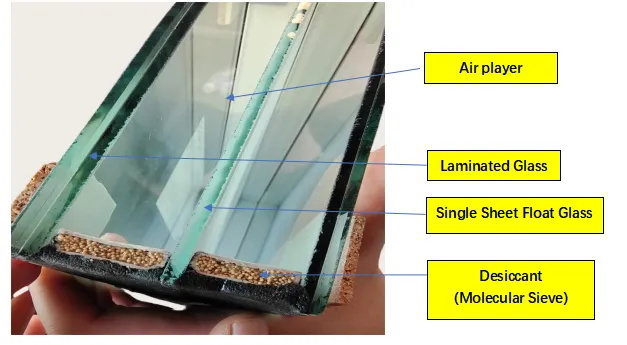Nov . 07, 2024 12:13 Back to list
Applications and Benefits of Laminated Wire Glass in Modern Architecture and Safety Design
Laminated Wire Glass An Overview
In the realm of architectural and safety glass solutions, laminated wire glass has become a prominent choice for both its functionality and aesthetic appeal. Combining the strength of laminated glass with the security features of wire mesh, this innovative material presents numerous advantages that make it suitable for a variety of applications including commercial buildings, educational institutions, industrial sites, and even residential properties.
What is Laminated Wire Glass?
Laminated wire glass consists of two or more sheets of glass that are bonded together with a plastic interlayer, which not only provides structural integrity but also enhances safety. Embedded within the layers is a wire mesh or wire screen, which acts as a reinforcement mechanism. This design not only prevents shattering upon impact but also ensures that if the glass does break, the fragments remain adhered to the interlayer rather than scattering, reducing the risk of injury.
The wire mesh can vary in thickness and spacing, allowing for customization based on specific safety and aesthetic requirements. Glass thickness can also be adjusted, providing flexibility in strength and thermal insulation properties.
Applications and Benefits
Laminated wire glass is particularly beneficial in environments where safety and security are paramount. Its primary applications include
1. Safety and Security The presence of wire mesh within the laminated structure significantly enhances resistance to forced entry. Thus, it is commonly used in places such as bank teller windows, schools, detention centers, and any area requiring high safety standards.
2. Fire Resistance Laminated wire glass is often compliant with fire safety regulations, offering a barrier that can withstand high temperatures for extended periods. Depending upon the type of lamination and the wire utilized, it can act as a fire-rated barrier, providing valuable time during an evacuation.
3. Sound Insulation Another advantage of laminated wire glass is its sound-dampening qualities. The interlayer can absorb sound waves, making it an ideal choice for settings that require acoustical privacy, such as conference rooms, music studios, or healthcare facilities.
laminated wire glass

4. UV Protection The interlayer in laminated wire glass can block a significant amount of harmful ultraviolet (UV) rays, protecting both occupants and furnishings from sun damage. This aspect makes it advantageous for spaces with significant exposure to sunlight.
5. Aesthetic Versatility Laminated wire glass can be customized in various finishes, colors, and textures, allowing architects and designers to incorporate it into their projects seamlessly. Whether used in interior partitions, facades, or skylights, it provides an attractive solution that does not compromise safety.
Installation Considerations
Installing laminated wire glass requires adherence to specific guidelines to ensure optimal performance. It is crucial to work with professionals who are familiar with the materials and techniques required for its installation. Additionally, the design and thickness of the glass, as well as the type of wire mesh, should be chosen based on the intended application and safety requirements.
Maintenance and Care
Maintaining laminated wire glass is relatively straightforward. Regular cleaning with mild detergents and soft cloths is typically sufficient. However, care must be taken not to use abrasive materials that could scratch the surface. Regular inspections for integrity, especially following extreme weather events or impacts, are recommended to ensure continued safety and performance.
Future Developments
As technology continues to advance, the future of laminated wire glass looks promising. Innovations in materials and manufacturing techniques may lead to the development of even more robust and versatile options. Additionally, the growing emphasis on sustainability in building materials is expected to influence the design and production of laminated glass products, making them even more environmentally friendly.
Conclusion
In summary, laminated wire glass stands out as a multifaceted solution within the architectural glass industry. Its unique combination of safety, security, aesthetic appeal, and functionality positions it as an essential component in modern construction. As awareness of its benefits spreads and technology evolves, laminated wire glass is likely to become an even more prevalent choice for architects and builders seeking to enhance both the safety and beauty of their structures.
-
Safety and Style with Premium Laminated Glass Solutions
NewsJun.24,2025
-
Reinvents Security with Premium Wired Glass
NewsJun.24,2025
-
Premium Float Glass Line for Modern Architecture
NewsJun.24,2025
-
Low Emissivity Glass for Energy-Efficient Architecture
NewsJun.24,2025
-
High-Performance Insulated Glass Solutions for Modern Architecture
NewsJun.24,2025
-
Elevates Interior Style with Premium Silver Mirror
NewsJun.24,2025
Related PRODUCTS














